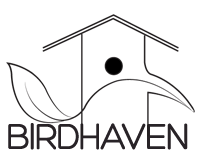Native plants in settings that mimic nature invite birds and pollinators
BY ABRAHAM STORER JUN 22, 2022
https://provincetownindependent.org/visual/2022/06/22/rethinking-gardens-as-havens-for-birds/
If you’ve spent any time on the Outer Cape, you know that birds are a thing. They make the news here, with people calling in their sightings for a weekly report produced by Mark Faherty, science coordinator at Mass Audubon and past president of the Cape Cod Bird Club. There’s a shop for devotees in Orleans: the Bird Watcher’s General Store is a window on the subculture of local birdwatching. And in Wellfleet, landscaper Nathaniel Hall Taylor creates entire gardens with birds in mind.
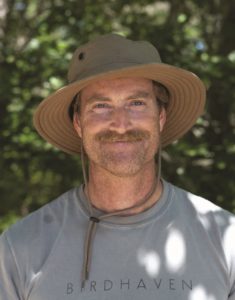
Taylor is on a mission to replace invasive species with plants that local bird populations have adapted to and find useful as food sources and shelter. Birdhouses are a good thing, he says, but he doesn’t want you to buy a bird feeder. “I try to push my clients away from artificial sources of food,” he says.
On a walk through a landscape he’s been working on, deep in the Truro woods, Taylor identifies native shrubs he has used to line the driveway, screening it from the forest. His selections are meant to attract both pollinators and birds. The oak-leaf hydrangea is starting to bloom, producing white cone-shaped panicles. It’s a hardy native alternative to the more commonly used Himalayan blue hydrangea.
“I like using native shrubs that provide berries in the fall for migratory birds,” says Taylor, pointing to cranberrybush viburnum, a shrub that can grow to 12 feet and provides red berries in the fall for birds such as cedar waxwings and Swainson’s warblers.
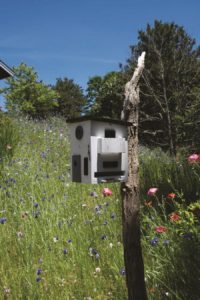
“Some birds are pure seed eaters,” Taylor says, explaining how the stout conical bill in birds like finches and cardinals identify this preference. Cedar waxwings, however, which arrive by early May, are versatile eaters, feeding on the petals of apple blossoms or nectar, transitioning to protein-rich insects during nesting season, and then switching to fruit when the berries come out.
Taylor, not a purist, admits that he has one nonnative shrub in this grouping: a lilac, native to Siberia. He describes this formal old shrub as “easy to grow, very hardy, and fragrant” — a hard plant to give up in any yard.
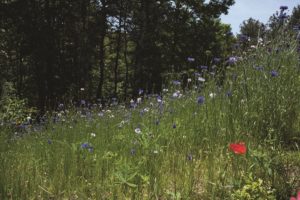
Then there are lawns. “I don’t do lawns, I do meadows,” Taylor says. “I have children. I understand lawns — they’re an easy place to put a toddler. We have to find a balance. Can we get away with less lawn?
“Grass is an exotic plant and requires fertilizer, pesticides, and a lot of water,” Taylor adds. “There are better alternatives.”
We walk past a wildflower meadow he coaxed into existence by replacing a grassy area over a leaching field. Last fall he scraped off exotic grass, spread loam, put in an irrigation system, and planted wildflower seeds. He spent 20 days watering it twice a day for 15 minutes, he says, and this spring it has started to bloom. A colorful array of flowers weaves through the tall grass. Bachelor buttons range in color from white to deep purple among white and pink poppies.
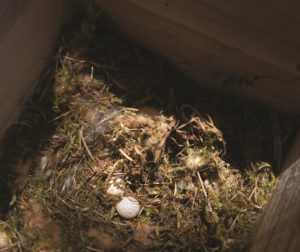
“Look at how much aerial activity there is,” he says, gesturing to the meadow teeming with bees. Soon, butterflies should also start visiting the field.
At the edge of the meadow, Taylor erected birdhouses for cavity nesters such as chickadees, bluebirds, tree swallows, and wrens. “As stewards of our land it behooves us to put cavity nest housing in for our birds,” he says. “They really do need it,” a fact evidenced by the fully occupied housing. Late March can be a tense time in the meadow, he says, with birds battling over homes.
Taylor’s interest in birds was nurtured by his mother, the painter Noa Hall. “She and I gardened a lot together,” he says. “First thing in the morning, my mother was out the door with a cup of coffee. Each day we would see new things.”
In high school, his interest in nature grew to include birds. While studying plant science at Cornell, Taylor met David Winkler, a professor of ornithology “who took me under his wing (pun intended).” He joined Winkler in a study of swallows in Peru.
Taylor started his current business, which he calls Birdhaven, in 2015, after a career spent studying birds and working as a stage actor in New York and Los Angeles. It is a marriage of the scientific and the creative. His bird habitats are guided by an aesthetic vision: “I try to mimic the woodlands and coastal lands of New England,” he says.
“I built my business on my own love for this planet and habitat,” says Taylor, though he has some tough words for at least one nonnative shrub used in hedges all over Provincetown: “European privet should get the hell out.” He’s quick to add a list of alternatives, though: try American hornbeam or American beech, “which can be densely pruned to create a hedge.”
